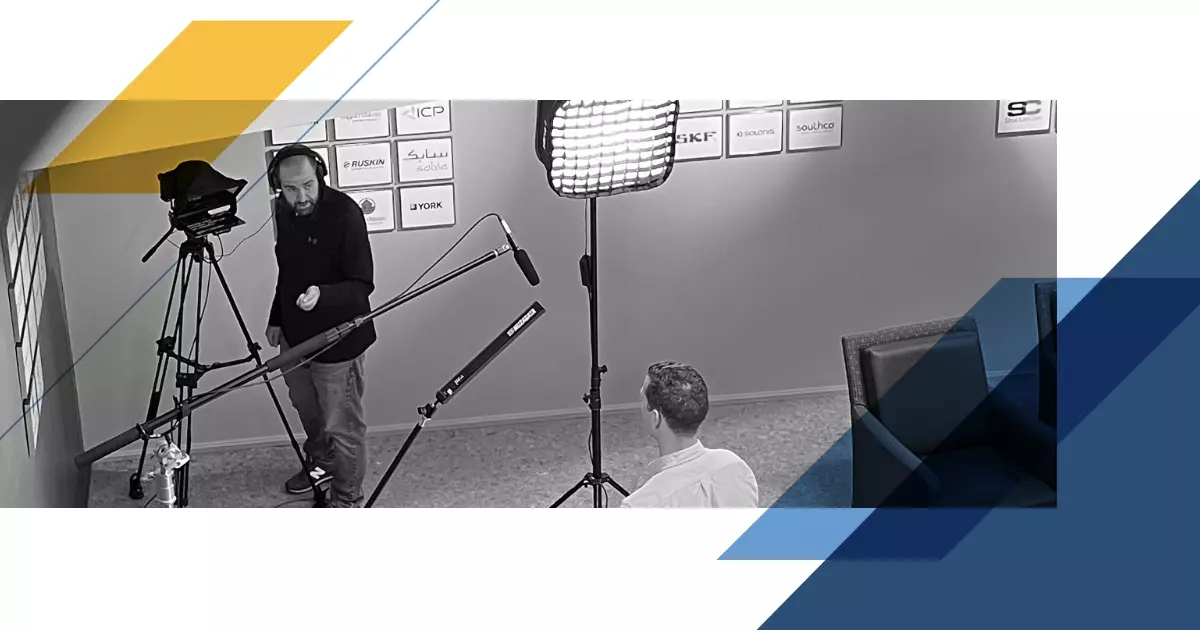Writing = Math: Why Smart B2B Engineers Don’t Have to be Bad B2B Writers
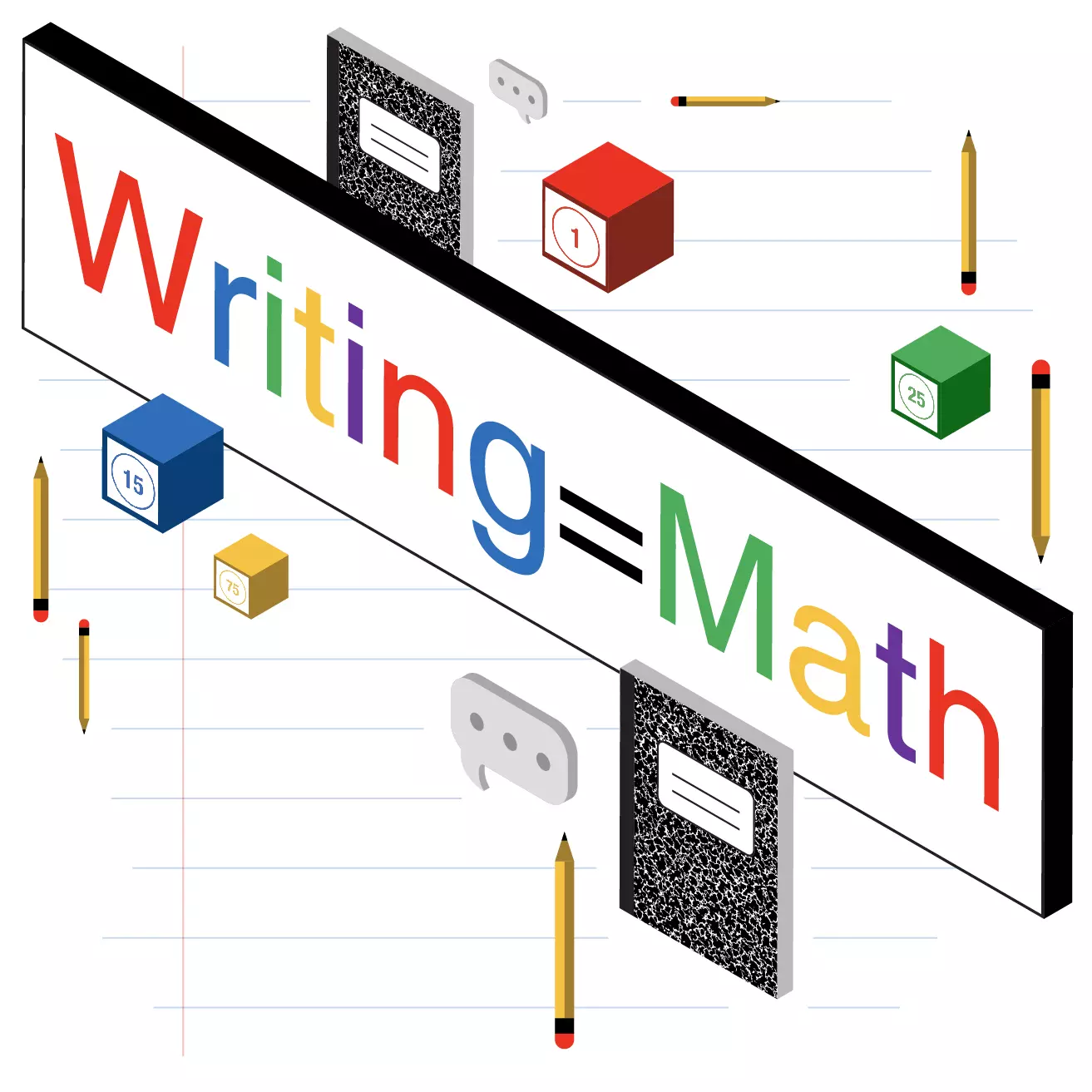
Good news for engineering-minded B2B professionals: The fundamentals of writing can be reduced to a few simple algorithms.
Moby Dick is bad writing. It may be one of the great works of American literature — I'll grant you that. But I can tell you from firsthand experience that this book is a titanic failure of the written word. Yes, this is a hill I am willing to die on.
For the record, I was only 12 years old when I tried to read Herman Melville’s magnum opus. And I’ll tell you: The book was junk. At least it was to my 12-year-old self. Because, in all fairness to Melville, bad writing is measured on a sliding scale, entirely relative to its accessibility to the reader. Nothing makes for bad writing quite like inaccessibility.
Inaccessible writing = useless writing = bad writing
So now, as we stand in the shadow of the literary junkyard that is Moby Dick, I’ve got some bad news for most B2B-related writing: We’re not doing much better. This is because, if you look really closely at the workflow that ultimately produces most B2B copy, you'll usually find an engineer somewhere in the mix. And engineers are smart. Super smart. Too smart for their own good.
Here’s an example of what happens when we try to channel the mind of an engineer into the written word:
With our core competency focused on supporting customer firms with low-to-medium-capacity systems delivering critical high-speed and precision-enterprise applications, iniTECH thoughtfully leverages decades of expertise to support its customers in improving systems so that they are standards-compliant as well as fiscally sound and perfectly scalable.
If you're an engineer, or you care about one in your life, I want to show you why this kind of writing is a problem. And, if you do happen to be an engineer, I know well enough that I’m not going to persuade you with the sheer power of my shimmering prose. I'll only convince you with the numbers.
Why Words Matter — by the Numbers
The “2019 Adobe Brand Content Survey” asked users what they found most annoying about content, and their #1 answer, by an 11-point margin, was that the content was “too wordy or poorly written.” Oh, and by the way, that same survey asked those people if one of these annoyances would prevent them from making a purchase.
Three in five said yes.
This is a tragedy. Because, for all the marketing channels and digital tactics at our disposal in 2019, from email to social to web to chat, the critical point of engagement always has to do with people reading stuff. And if our words fall flat, so does everything else.
But now for the good news: The fundamentals of better writing can be reduced to a few simple algorithms. Basic mathematical stuff. For that, we can thank the United States Navy.
Writing Advice From the Navy
In 1975, the Navy had a communication problem. In their words, this communication problem had to do with “the ability of military personnel to understand narrative technical material.” Now, bear in mind, we’re talking about the Navy here. This is a life-or-death enterprise that depends greatly on the operation of large, highly engineered machinery. Even so, the Navy’s big problem at the time was … writing.
So, they commissioned a team of researchers to take all that was currently known about readability and turn it into some tangible, actionable guidelines.
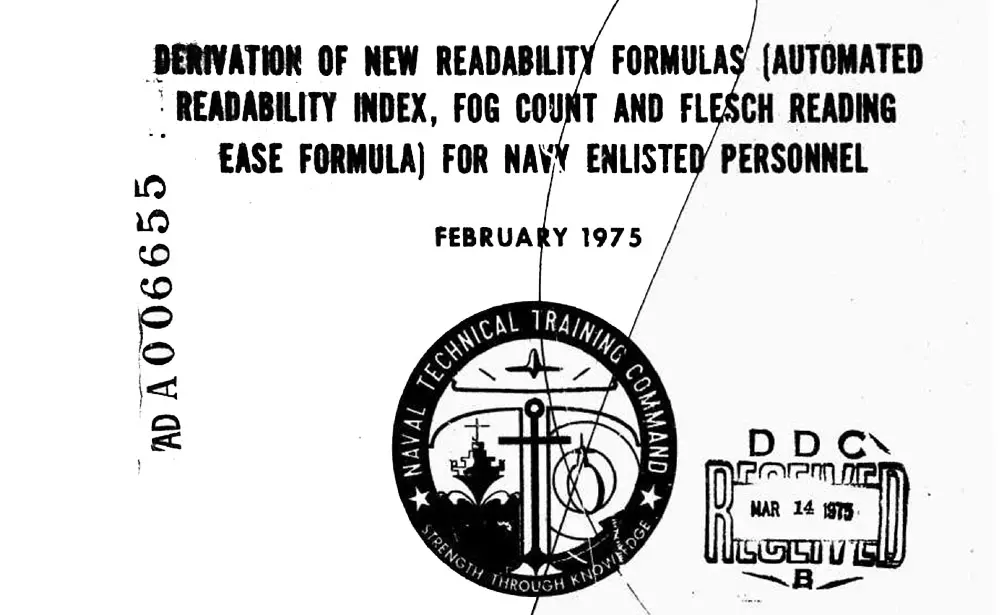
That research ultimately landed in a report called “Derivation of New Readability Formulas for Navy Enlisted Personnel.” Right out of the gate, this report stressed the incredible importance of readability. In their words, “the effects of faulty communication are well-known and disastrous,” and, “The more difficult the material, the more mistakes were made.”
The Origin of Numerical “Grade-levels” for Writing
Out of that Navy report came the readability formula now famously known as the “Flesch-Kincaid Grade-level Test.” We don’t need to crack into all the inner workings of that formula, but it’s based largely on two factors: 1) sentence length and 2) word length. Today, this formula is the most common measurement used for assigning grade-levels to a text.
Using “Flesch-Kincaid” as a standard of measurement, the U.S. Navy concluded that the most effective reading level for technical documents was between ninth and 10th grade.
Setting a Benchmark for B2B
But what is the target reading ease for B2B marketing professionals? Well, one of the foremost authorities in user behavior found that technical audiences prefer plain language just as much as anyone else. In a report called “Plain Language Is for Everyone, Even Experts,” Nielsen Norman recommended a target Flesch-Kincaid score of 10 to 12.
But hitting those numbers is not easy, especially when your content deals with a complex subject. I’ve spent years reviewing copy from some of the best B2B writers on planet earth, and believe me, they’re not hitting that 10-12 range on the first pass.
Formulas for Better B2B Writing
In revising and editing these documents day after day, I discovered something funny. I noticed that I could usually get a piece of writing from a grade-level of 16 down to a nine without dumbing anything down and without sacrificing a single piece of information. All it takes are a few simple rules. And I have some more good news for the engineers among us: Every one of these rules is perfectly quantifiable. I have numbers.
Formula 1: (Any sentence) ≤ 25 words
Engineer or not, if you are a human being and you write, there's a 99% chance that your sentences are too damn long.
Everybody does it, and we all do it for the same reason: Writing is hard. And the hardest thing about writing is not the typing. It’s figuring out the One Thing you want to say. When you skimp on that, you wind up trying to say Everything instead. Which means more writing and more words.
That’s how we end up stretching our ideas into interminable sentences that are difficult to read and torturous to write. Like most bad habits, long sentences make everything worse. Fortunately, while this compulsive behavior is easily the most common mistake of all B2B writing, it's also the easiest to fix.
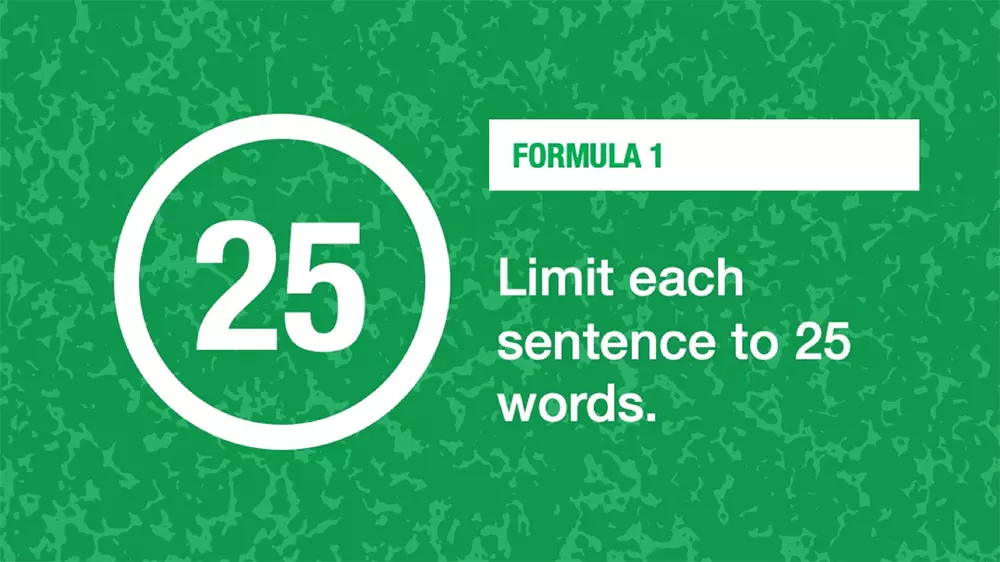
This is the most important of the formulas because reading ease is based on two factors: 1) word count and 2) syllable count. When you’re dealing with a complex subject, you’re going to be stuck with some pretty long words. Sometimes you just can’t cut the syllables. So, our best shot at producing readable content is to take aim at overlong sentences.
Shortening overlong sentences is easy. Most can be corrected by using some combination of two simple tricks:
- Omit needless words
- Split the sentence into two — or three
Let’s look at an example of an overlong sentence to apply these tricks:
Due to the fact that I am a very big fan of Milli Vanilli, at the present time I am the owner of several different pieces of Milli Vanilli merchandise, including a rare branded mood ring from their 1990 world tour. (41 words)
First, we’ll apply Trick 1 and “Omit needless words.” This brings us down to a 29-word sentence:
Because I am a big fan of Milli Vanilli, I now own several pieces of Milli Vanilli merchandise, including a rare branded mood ring from their 1990 world tour. (29 words)
That’s better. But we’re still breaking the 25-word formula, aren’t we? By applying Trick 2 and splitting the sentence, we wind up with one 18-word sentence and one 13-word sentence:
Because I am a big fan of Milli Vanilli, I now own several pieces of Milli Vanilli merchandise. I even own a rare branded mood ring from their 1990 world tour. (18 words; 13 words)
This 25-word limit (Formula 1) is the easiest to remember, and it’s also perhaps the most useful. Once you’ve spent enough time applying this formula, you’ll start to notice when a sentence exceeds the limit even after a passing glance.
Formula 2: (word-count) ÷ (sentence count) = 15
As with all formulaic thinking, an overreliance on Formula 1 can create problems of its own. If you follow that first algorithm with an engineer's precision, you just might find yourself with a series of perfectly compliant 25-word sentences. That would be a problem. While 25 words make a decent limit to the length of a given sentence, a droning series of maxed-out 25-word sentences would, in fact, feel too damn long.
To remedy this, it helps to keep an average sentence length in mind as you write. You can get this figure easily by dividing the word count of a given paragraph by the number of sentences in that paragraph. The product of that equation should be 15 — or something very close to it.
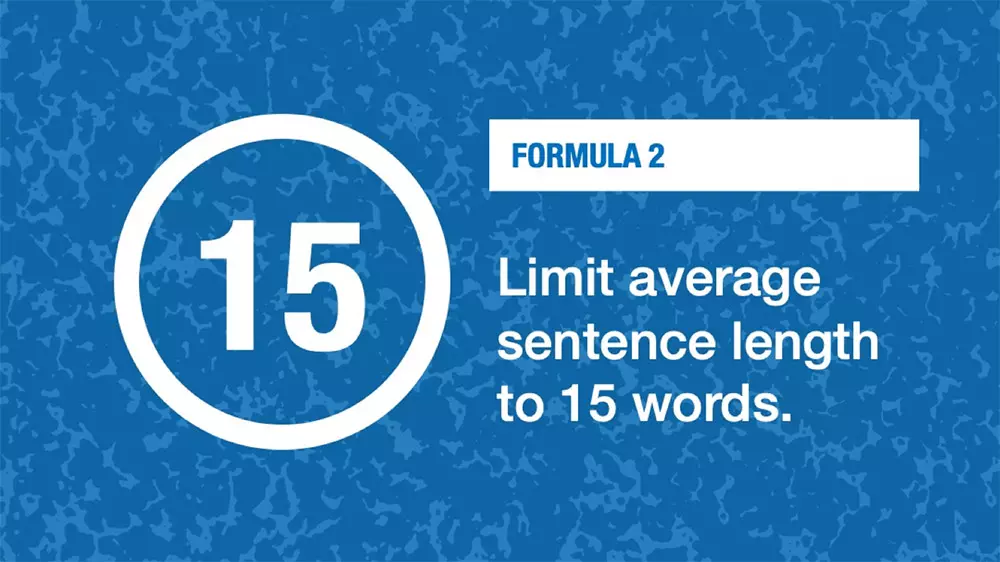
This average figure is one you should avoid greatly exceeding or greatly falling short of. An average sentence length of eight words, for instance, might mean that your sentences are too repeatedly clipped and staccato. So, treat the 15-word average like a “Goldilocks zone” for your sentences within a given paragraph.
Formula 3: (any paragraph) ≤ 75 words
In writing, most errors and most excellence occur on the sentence level. That's why our first two formulas are designed to help us better organize our thoughts into sentences. But we should take a moment to talk about the way we organize and house those sentences. I'm talking about our good friend the paragraph.
And, like most sentences, most paragraphs are — you guessed it! — too damn long. So, let's give ourselves a number.
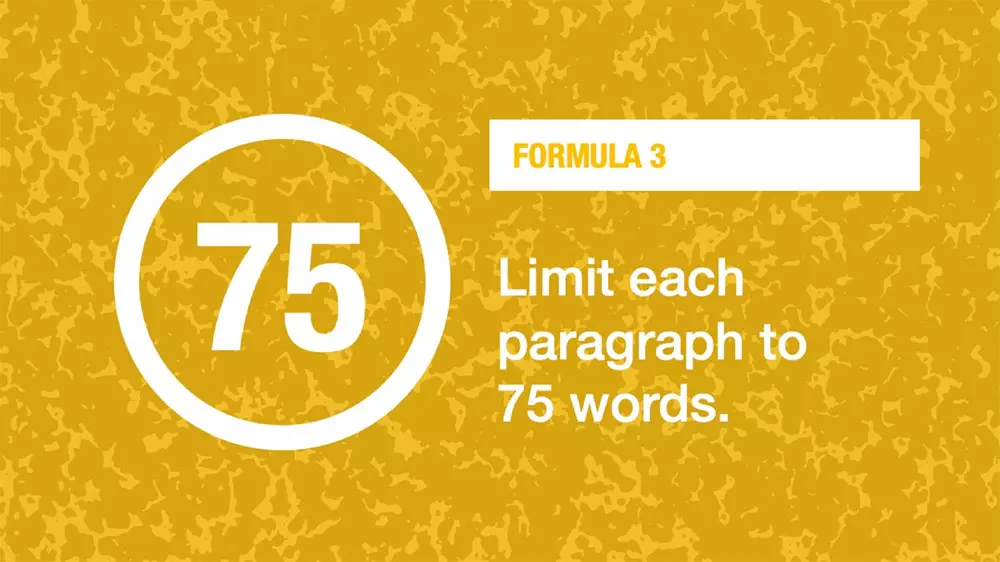
Now, bear in mind, this is an absolute max. And most web usability best practices will recommend a limit closer to 50. Since B2B writing encompasses plenty of long-form genres more acclimated to the standards of print, I decided to split the difference with the commonly recommended print paragraph limit, which typically lands in the 100-word range.
So, whether in digital or print, do your best to limit your B2B writing paragraphs to 75 words — and less than that whenever you can.
Formula 4: 1 (thought) = 1 (sentence)
So, we've talked about 25, 15 and 75. But there is one last number I’d like to discuss: One. Do your best to limit each sentence to a single thought. In other words, don’t overload your sentences with information. Here’s an example:
With a commitment to sustainable business practices, iniTECH is the only IT firm entirely focused on the agricultural industry.
That sentence is clearly carrying two distinct statements. Two separate thoughts. One is about sustainability. The other is about a unique area of specialization (agriculture). Now, either there’s a connection between those two facts that the sentence isn’t adequately spelling out or we’re just looking at a two-headed sentence.
Formula 4 can be tough because you have so many things to say. So many messaging points to include. So many specs to reference. So many disclaimers and qualifications. Go ahead and say those things — just don't try to stuff multiple statements into a single sentence. Break them out. Take your time.
One thought, one sentence.
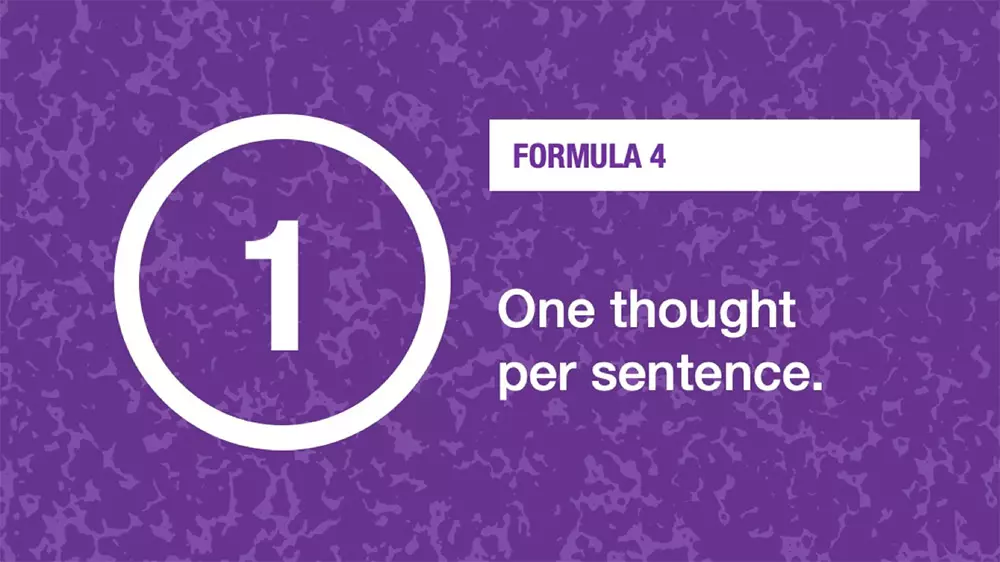
And there you have it. 25, 15, 75, 1. These four simple numbers can improve the accessibility of your B2B content. But I don’t expect you to accept this thesis on faith. No self-respecting engineer would take an English major’s word for it. So, let’s run a little test, shall we?
Fixing Melville
Here is a passage from Herman Melville’s Moby Dick, which clocks in at a Flesch-Kincaid grade level of 23:
The large importance attached to the harpooneer’s vocation is evinced by the fact, that originally in the old Dutch Fishery, two centuries and more ago, the command of a whale ship was not wholly lodged in the person now called the captain, but was divided between him and an officer called the Specksnyder. (Grade Level: 23)
Now let’s apply our four formulas to the same passage without removing a single technical vocabulary term:
The importance of the harpooneer’s role goes back to the old Dutch Fishery. There, two centuries and more ago, the command of a whale ship was not wholly lodged in the person now called the captain. Instead, the command was divided between him and an officer called the Specksnyder. (Grade Level: 8)
Just by applying the four formulas (most notably the ones dealing with sentence-length), and without removing one shred of technical information, we’ve brought Moby Dick’s Flesch-Kincaid readability score from 23rd grade to eighth.
Four Formulas for Better B2B Writing:
Formula 1: (any sentence) ≤ 25 words
Formula 2: (word-count) ÷ (sentence count) = 15
Formula 3: (any paragraph) ≤ 75 words
Formula 4: 1 (thought) = 1 (sentence)
If there’s hope for Moby Dick, then there’s hope for every engineer on planet earth. Because engineers are smart. And because writing about rocket science doesn’t have to be rocket science. And because good writing is really just a matter of basic math.
Sign Up for our Newsletter - Get agency updates, industry trends and valuable resources delivered directly to you.
Godfrey Team
Godfrey helps complex B2B industries tell their stories in ways that delight their customers.




